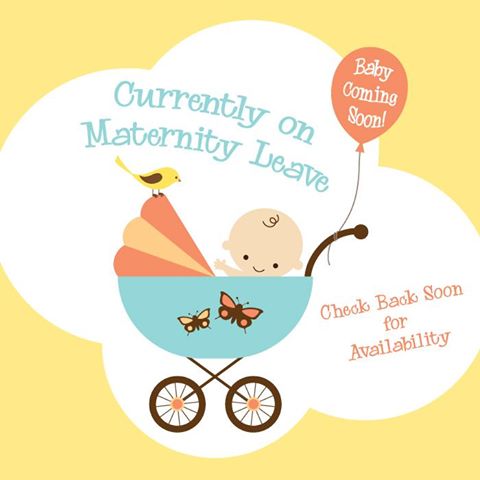 If your employer has a policy that requires all pregnant employees to take unpaid leave for the duration of their pregnancy, regardless of whether they want to, your employer is probably engaged in illegal discrimination and in violation of the Pregnancy Discrimination Act of 1978 (PDA). However, what if your employer has a policy that states people who are unable to perform their job duties for any off-the-job reason must take unpaid leave until they become capable of performing their job duties?
If your employer has a policy that requires all pregnant employees to take unpaid leave for the duration of their pregnancy, regardless of whether they want to, your employer is probably engaged in illegal discrimination and in violation of the Pregnancy Discrimination Act of 1978 (PDA). However, what if your employer has a policy that states people who are unable to perform their job duties for any off-the-job reason must take unpaid leave until they become capable of performing their job duties?
Would this second policy constitute illegal pregnancy discrimination? Although it doesn’t seem to target pregnant employees, after reviewing Jennifer Latowski’s lawsuit against her employer, Northwoods Nursing Center, the answer to this question is maybe.
Latowski v. Northwoods Nursing Center
 Latowski worked for Northwoods as a certified nursing assistant. Latowski’s job duties included helping nursing home residents care for themselves and required the ability to lift over 50 pounds.
Latowski worked for Northwoods as a certified nursing assistant. Latowski’s job duties included helping nursing home residents care for themselves and required the ability to lift over 50 pounds.
When Latowski became pregnant, Northwoods demanded that Latowski provide a doctor’s note confirming that Latowski did not have any physical restrictions due to her pregnancy. Unfortunately, because of Latowski’s past miscarriages, her pregnancy was considered high risk, and her doctor restricted her from lifting anything over 50 pounds.
Following receipt of this doctor’s note, Northwoods explained to Latowski that she would either have to find a doctor who didn’t recommend the 50-pound lifting restriction or cease employment with Northwoods. Even though Northwoods had light-duty jobs to accommodate injured employees, this accommodation only applied to employees with work-related injuries. Latowski did not obtain a second medical opinion regarding her lifting restriction, and she was fired.
Before and after her firing, various managerial Northwood employees made the following comments to Latowski:
- Northwood would be liable if anything happened to her baby,
- Latowski wouldn’t want to lose her baby,
- Latowski would be jeopardizing her and her child’s safety if she had to lift patients who routinely weighed more than 150 pounds, and
- Latowski’s belly would prevent her from doing her job effectively.
Except for the 50-pound lifting restriction, Latowski was fully capable of performing all of her job duties at all times.
Latowski sued Northwoods alleging pregnancy discrimination under the PDA, disability discrimination under the Americans with Disabilities Act of 1990 (ADA), and several other federal and state causes of action. The U.S. district court dismissed all of Latowski’s claims on summary judgment. On appeal, the Sixth Circuit Court of Appeals reversed the District Court as to Latowski’s PDA claim but affirmed the district court as to the ADA and other claims.
Analysis of Latowski’s PDA and ADA Claims
Because Latowski did not have direct evidence of discrimination, to survive Northwood’s motion for summary judgment, Latowski needed to provide indirect evidence of discrimination by going through the following steps (also known as “burden shifting”):
Step 1: Latowski provides enough proof of discrimination to establish a prima facie case.
Step 2: Assuming Latowski can pass step 1, Northwood can explain that there was no discrimination because it had a nondiscriminatory reason for treating Latowski differently.
Step 3: Latowski must then argue that the so-called “nondiscriminatory reason” was actually a lie or pretext. A pretext is a fake, nondiscriminatory reason to explain the discrimination in order to hide the real, improper reason for the discrimination.
PDA Claim
 Latowski’s PDA claim was based on her argument that she was the victim of pregnancy discrimination by way of her firing and having to get a doctor’s note. She successfully established a prima facie case (getting through step 1) by showing she was qualified for her job, she was pregnant, she got fired, and there was a causal connection between her firing and her pregnancy. Latowski was able to prove the causal connection between her pregnancy and firing in two ways. The first consisted of comments the Northwood managerial employees made about Latowski’s pregnancy right before and after her firing. The second was the fact that Northwood provided light-duty jobs to other certified nursing assistants who had work-related injuries.
Latowski’s PDA claim was based on her argument that she was the victim of pregnancy discrimination by way of her firing and having to get a doctor’s note. She successfully established a prima facie case (getting through step 1) by showing she was qualified for her job, she was pregnant, she got fired, and there was a causal connection between her firing and her pregnancy. Latowski was able to prove the causal connection between her pregnancy and firing in two ways. The first consisted of comments the Northwood managerial employees made about Latowski’s pregnancy right before and after her firing. The second was the fact that Northwood provided light-duty jobs to other certified nursing assistants who had work-related injuries.
Northwood defended its actions (getting through step 2) by arguing that not providing Latowski with light-duty work had nothing to do with her pregnancy but rather was due to the fact that her condition was not work-related. Since only work-related injuries were eligible for light-duty work, Latowski was not given light-duty work.
Latowski now had to show that the nondiscriminatory reason was a pretext for discrimination. Latowski did this by explaining that Northwood’s light-duty policy was unreasonable. The court acknowledged that a jury could decide that Northwood’s policy of only providing light-duty work to those with work-related injuries could be a pretext for discrimination.
Latowski also showed pretext by identifying the comments made by managerial Northwood employees. The comments were discussed above, and even though they may have been made in good faith with sincere concern for Latowski and her unborn child, that cannot justify discrimination against an employee who is otherwise capable of accomplishing all their job duties.
ADA Claim
 Latowski’s ADA claim was thrown out at the summary judgment stage because Latowski was unable to survive the first step of burden shifting by proving a prima facie case of disability discrimination.
Latowski’s ADA claim was thrown out at the summary judgment stage because Latowski was unable to survive the first step of burden shifting by proving a prima facie case of disability discrimination.
Under the ADA, a normal pregnancy is not a disability, but a pregnancy with complications can be. However, assuming Latowski’s high-risk pregnancy could be considered a disability under the ADA, there was no evidence to support the proposition that Northwood viewed Latowski as disabled. Therefore, Northwood couldn’t discriminate based on disability if it didn’t view Latowski as disabled.
For further discussion about burden shifting in discrimination cases, visit Practical Law’s “McDonnell Douglas Burden-Shifting” resource page.
Summing It Up
- A plaintiff claiming discrimination can survive summary judgment by making it through the following three-step burden-shifting process:
- The plaintiff establishes a prima facie case of discrimination by presenting enough proof that discrimination took place.
- If the plaintiff succeeds with step 1, the defendant has the burden of showing what the plaintiff claims is discriminatory is not really discriminatory: that is, the defendant had a nondiscriminatory reason for treating the plaintiff differently.
- Then burden is then back on the plaintiff to prove that the nondiscriminatory reason is a pretext or cover for actual discrimination.
– If an employer does not view an employee as disabled, it cannot be liable for disability discrimination.
– Employer comments attempting to explain the reason for the alleged discriminatory conduct, even if made with nondiscriminatory intent, can still be evidence of discrimination.





